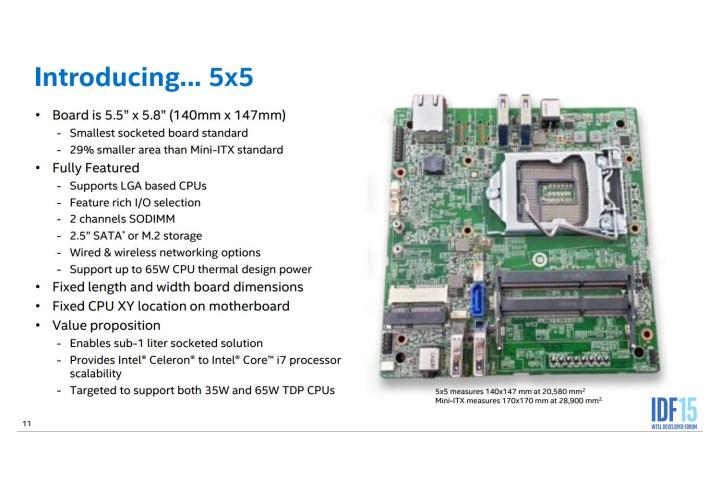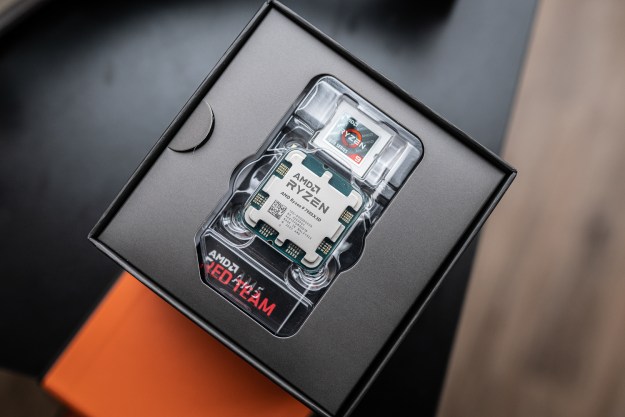
The 5×5 is being billed as the smallest board with a socketed CPU. At just 5.5 inches by 5.8 inches, it’s some 29% smaller in terms of area that the Mini-ITX standard.
Intel exhibited a prototype of the device alongside the NUC systems it brought to the CES 2015 back in January. However, back then it was without a name, suggesting that the project is reaching completion. The 5×5 likely won’t be a consumer product, instead being offered to device manufacturers to build systems around.
Offering Intel Core processors, M.2 or 2.5-inch SATA storage and support for wired or wireless connectivity, this board could take on a host of uses. The key to a product like this is flexibility, and that seems to be Intel’s priority in the design process.
We’re seeing an influx of small devices that need to built upon a fully-featured platform. It’s clear that Intel sees the value of micro devices based on projects like the Compute Stick, but a component like the 5×5 demonstrates that the company expects the industry to move in that direction also.
There’s no longer any one type of computer that seems like the norm — desktops, laptops and tablets all enjoy their own share of the market, and the lines between each are becoming increasingly blurred.
However, it seems that something even bigger — and yet, smaller — is on the way. Tech like this is a pre-requisite for such micro-devices to become a reality, and it will be very interesting indeed to see what sort of projects come to pass thanks to Intel’s 5×5.
Editors' Recommendations
- Intel’s new Core Ultra chips needed to be more than this
- With the arrival of Core Ultra, a new era for Intel has begun
- Intel’s Core Ultra CPUs are more Apple, less AMD
- Intel Core i5 vs. i7: Which CPU is right for you in 2023?
- AMD’s upcoming Ryzen 5 5600X3D could completely dethrone Intel in budget builds


